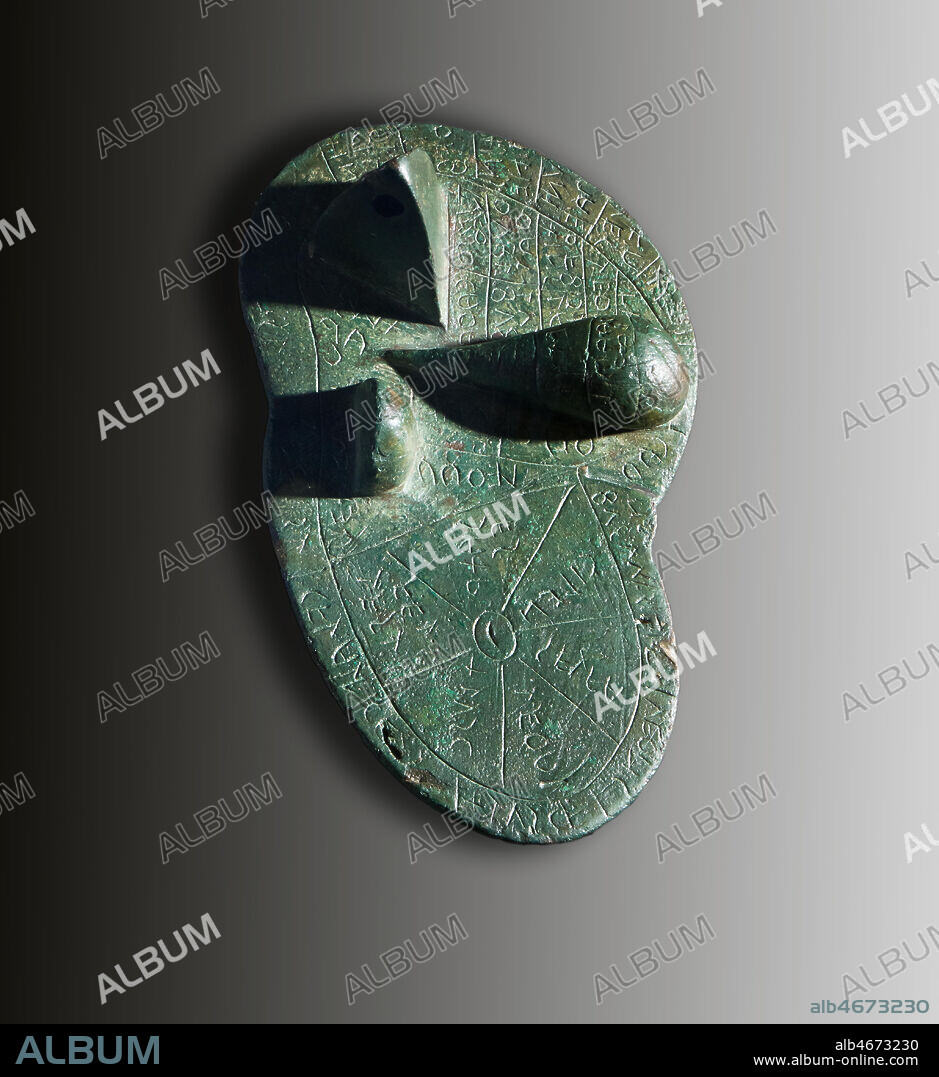alb4673230
Piacenza, Palazzo Farnese, Municipal Museums: Etruscan Liver. The Liver of Piacenza is an Etruscan artifact found in 1877, near Gossolengo, in the province of Piacenza. It is a life-sized bronze model of a sheep's liver covered in Etruscan inscriptions (TLE 719), measuring 126 mm by 76 mm by 60 mm and dated to the late 2nd century BC, i.e. a time when the Piacenza region would already have been Latin-dominated.. The liver is subdivided into sections for the purposes of performing haruspicy (hepatoscopy). The outer rim of the Piacenza liver is divided into 16 sections; since according to the testimony of Pliny and Cicero, the Etruscan divided the heavens into 16 astrological houses, it has been suggested that the liver is supposed to represent a model of the cosmos, and its parts should be identified as constellations or astrological signs.

|
Ajouter à une autre Lightbox |
|
Ajouter à une autre Lightbox |



Avez-vous déjà un compte? S'identifier
Vous n'avez pas de compte ? S'inscrire
Acheter cette image

Légende:
Voir la traduction automatique
Piacenza, Palazzo Farnese, Municipal Museums: Etruscan Liver. The Liver of Piacenza is an Etruscan artifact found in 1877, near Gossolengo, in the province of Piacenza. It is a life-sized bronze model of a sheep's liver covered in Etruscan inscriptions (TLE 719), measuring 126 mm by 76 mm by 60 mm and dated to the late 2nd century BC, i.e. a time when the Piacenza region would already have been Latin-dominated.. The liver is subdivided into sections for the purposes of performing haruspicy (hepatoscopy). The outer rim of the Piacenza liver is divided into 16 sections; since according to the testimony of Pliny and Cicero, the Etruscan divided the heavens into 16 astrological houses, it has been suggested that the liver is supposed to represent a model of the cosmos, and its parts should be identified as constellations or astrological signs.
Crédit:
Album / Ghigo Roli
Autorisations:
Modèle: Non - Propriété: Non
Questions sur les droits?
Questions sur les droits?
Taille de l'image:
4096 x 4467 px | 52.3 MB
Taille d'impression:
34.7 x 37.8 cm | 13.7 x 14.9 in (300 dpi)
Mots clés:
AGNEAU • ANIMAL: MOUTON • ART (CATÉGORIE) • ART • AUGURE • BREBIS • BRONZE • BRONZES • DIVINATION • FOIE • FUTUR • HISOIRE • HISTOIRE • ITALIE • MAGIE • MATERIAU BRONZE • MOUTON • MOUTONS • MUSÉE • ORACLE • PIACENZA (PC) • PREDICTION • PRESAGE • PROPHETIE • PROPHETIES • TROUPEAU DE MOUTONS
 Pinterest
Pinterest Twitter
Twitter Facebook
Facebook Copier le lien
Copier le lien Email
Email
